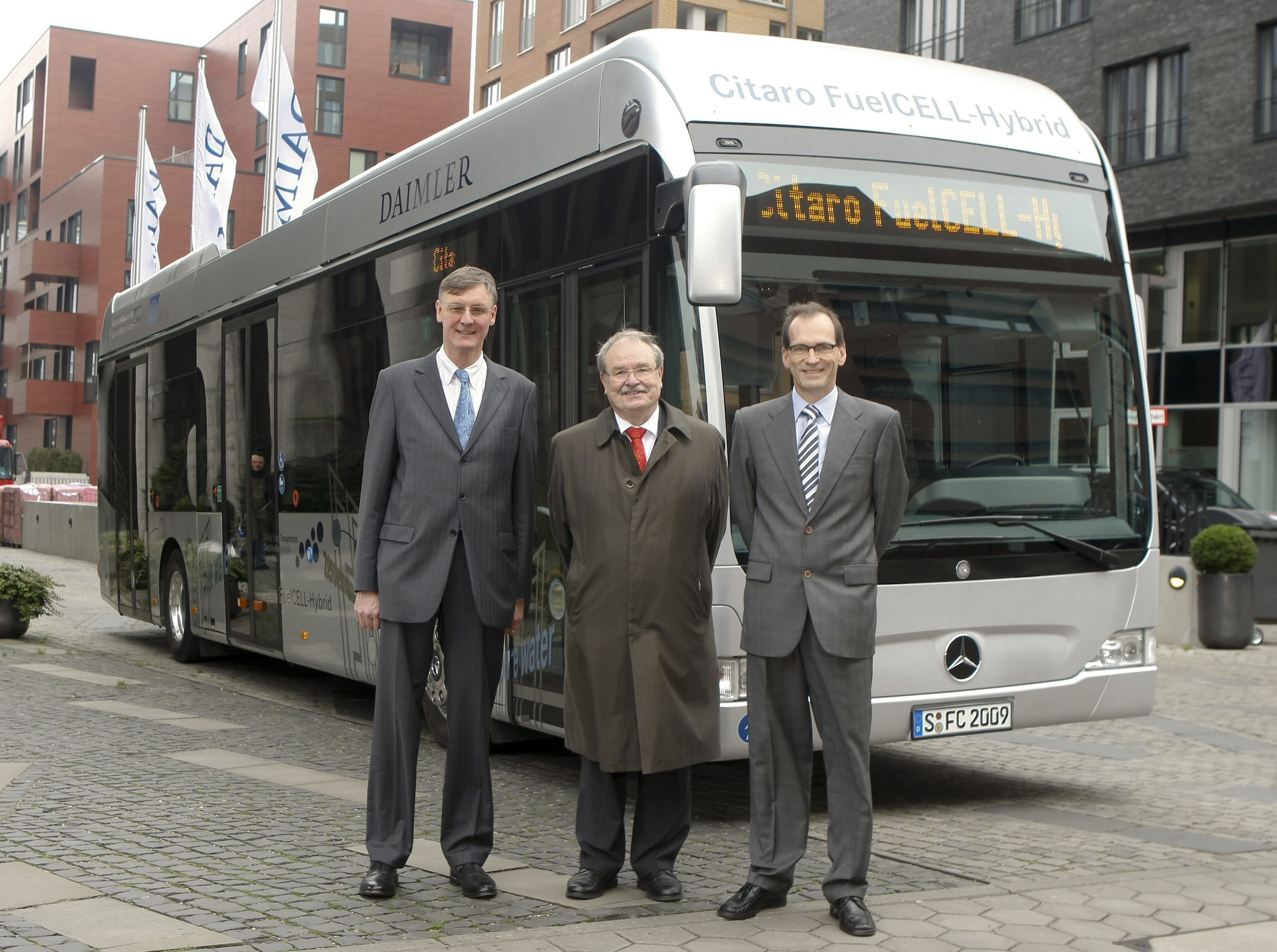Since 2005, Prof. Dr. Christian Mohrdieck (58) has been Head of Powertrain Development Fuel Cell Systems at Daimler’s Group Research and Development department for Mercedes-Benz Cars. He is also Managing Director of NuCellSys GmbH, the wholly owned subsidiary of Daimler AG. This company works in the field of the development of fuel cell and tank systems for vehicle applications. Mohrdieck is thus responsible for the fuel cell drive activities of Daimler AG including the cooperations. In an interview about the pre-series model of the GLC F-CELL, he gives an insight into the state of the art regarding the future of fuel cell technology.
Professor Mohrdieck, the time will soon come: This year the first GLC F-CELL will reach selected customers. Unlike many of its competitors, Daimler has thus shown staying power and stuck with the technology. Why?
Mohrdieck: Fuel cell technology is an integral part of our drive strategy. The advantages for us are obvious: zero emissions, long ranges and short refuelling times as well as a wide range of applications from passenger cars to buses, other large commercial vehicles and last but not least for stationary applications.
What else stands in the way of the breakthrough?
Mohrdieck: The performance of automotive fuel cell systems is undisputed today. Of course, the filling station infrastructure is still an uncertainty factor for customers. But the number of filling stations is growing, and not only in Germany. With our new generation of vehicles based on the GLC, we have created an additional range extension and charging option through the integration of plug-in technology. Another topic is of course the production costs – but here too we have taken another important step and we clearly see the next potential for improvement.
Who are fuel cell cars suitable for, what role do they play in the Mercedes-Benz drive portfolio?
Mohrdieck: The fuel cell drive is particularly interesting for customers who require a high daily range and have access to hydrogen filling stations. For vehicles in urban environments, on the other hand, a purely battery-powered drive is a very good solution today.
Solution. The GLC F-CELL is an important step for us, even though we do not yet represent large vehicle volumes. We are very much looking forward to the feedback of our customers.
The GLC F-CELL is a worldwide unique plug-in hybrid. Why combine fuel cell and battery technology in this way?
Mohrdieck: We wanted to take advantage of hybridization and not have to choose between A or B. The battery offers three advantages: We can recuperate kinetic energy, additional thrust is available when accelerating and the already mentioned extension of the range. The plug-in solution helps the customer in the initial phase of the infrastructure with a still “thin” filling station network: approx. 50 km can be loaded at home. In most cases, this will take you to the nearest hydrogen filling station in Germany.
“The drive system can basically be transferred to a large number of series and body variants.”
So is a plug-in fuel cell vehicle the solution for the future of mobility?
Mohrdieck: She could be one. Battery and fuel cell form a symbiosis. The two technologies complement each other very well: the power and speed of the battery support the fuel cell with a long range and fast refuelling capability, which has its ideal operating state more in power-constant driving conditions. In the future, a combination of scalable battery or fuel cell modules is conceivable – depending on the mobility scenario and vehicle type.
Mercedes-Benz has just presented pre-production models of new plug-in diesel hybrids at the Geneva Motor Show. There are many technical points of contact, right?
Mohrdieck: “With the plug-in fuel cell drive system, we are already benefiting from our modular hybrid concept and in particular from the compact design of our fuel cell system: The drive system can basically be transferred to a large number of series and body variants, because all other components – power electronics, electric motor and the like – are also part of our modular system and can be combined as flexibly as possible.
“We need industrial standards.”
At present, hydrogen for fuel cell propulsion is still predominantly produced from fossil energy sources such as natural gas. It’s not really “green” yet, is it?
Mohrdieck: Yes, this is just a first step, which shows that locally emission-free driving with fuel cell technology could be a real alternative. Even hydrogen from natural gas can reduce CO2 emissions in the entire chain by a good 25 percent. It is important that it can be produced “green”. There are already a lot of approaches for this. Hydrogen is the ideal energy carrier to store electricity from wind and solar power, both of which are not generated continuously. With a steadily growing share of renewable energies, hydrogen will certainly play an increasingly important role for the overall energy system. and thus also increasingly attractive for the mobility sector.
What is still to be done? What are the next steps?
Mohrdieck: We need industrial standards to be able to handle very large vehicle volumes. Further development work is particularly necessary to reduce material costs: Further reductions in size and components, but also the reduction in the proportion of expensive materials, are important topics here. If we compare our current system with that of the B-Class F-CELL, we have already achieved a lot – simply by reducing platinum by 90 percent. But there must be more. Process optimization in production will also help to reduce costs – but this is more a matter of volume scaling. Cooperation in cross-manufacturer projects such as “Autostack Industrie” and the emerging global investments in technology will certainly contribute to this.
Bilder/Images: Daimler
Post a Comment
You must be logged in to post a comment.






















